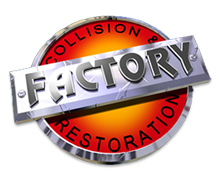
● Winter daylight hours are shorter, weather is cloudier and precipitation is likely to impair visibility, so it’s important to make sure that you can be seen.
● Snow, ice, and other messy road conditions can make it hard for cars to stop when they do see you, so it’s important to leave extra space.
Whether you’re waiting for help after an accident or you’re just trying to make sure everyone is okay and clear the road, it’s important to keep the following in mind during a winter car accident.
Stay Calm
No matter when you’re in an accident, it’s important to stay calm. The accident has already happened, and yelling at others isn’t going to change that, and in the winter, it’s extra important to keep safety in mind after an accident.
● It might not be safe to get out of your vehicle, so first, check your surroundings
● Turn on your hazards
● Check yourself for injuries, then check your passengers, and if possible, the passengers of other vehicles
Depending on the severity of the accident, you may be in shock and unaware of your own injuries or your surroundings. Call the authorities, even if you aren’t sure it’s necessary.
Stay Out of the Road
Pay attention to your surroundings. If and when it is safe for you to get out of your vehicle, pay attention. If possible, take photos and document the accident, and stay out of the road. If you can, move your vehicle off the road so that traffic can safely continue past you. Any obstacle in the road, even an accident, has the potential to cause accidents, especially when the roads are slippery and sight is limited.
If you can’t move your vehicle and you can’t get off the road, stay in your vehicle rather than next to it.
Be Seen
If you have them, put up flares, lights, reflectors, or brightly colored cloth to make yourself and your vehicle more visible. Make sure that if you’re around a curve, you place warning lights far enough back that cars can see them as they approach and not just as they hit the curve. Use your hazard lights!
Stay Warm
If you have an emergency kit in your car, now is the time to use it. Stay warm, use your extra blankets and clothes, and stay in the vehicle if possible. If you need to run the engine, make sure your tailpipe isn’t clogged with dirt or snow – it could be after the accident.

Recent Comments